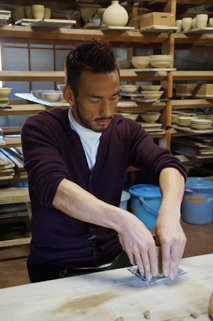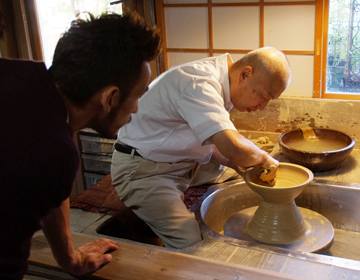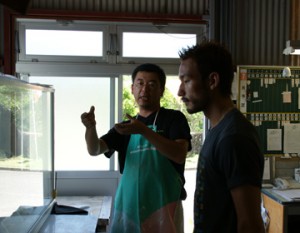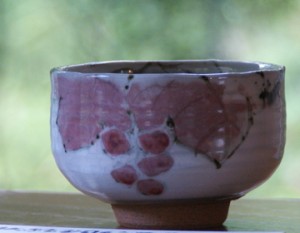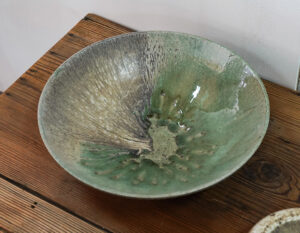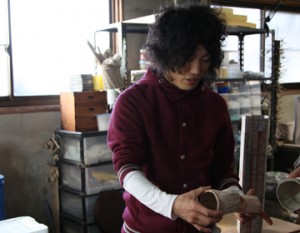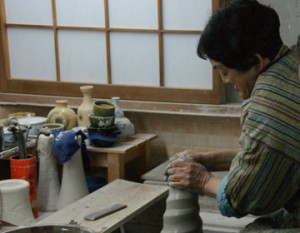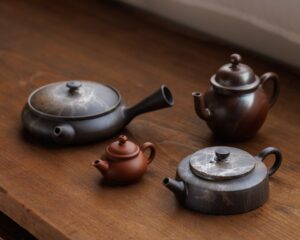Aizu potters active overseas
Toshihiro Munakata is the eighth generation head of Munakatagama which opened in 1718 in Aizu Hongo. He has won numerous awards, and in 2010, he opened a solo exhibition in Paris, France. His most important piece is one he made in 1997, ”Toshibachi”, which was awarded the Japan Ceramics Exhibition Award in the 14th Japan Ceramics Exhibition. The bowl is solid, evokes a sense of tension, and yet also has warmth. He took a letter from his own name and titled it ”Toshibachi”.
Climbing kiln at Munakatagama
We were able to see the climbing kiln on our visit. With the Great East Japan Earthquake in 2011, the climbing kiln that had been passed down for generations was destroyed. So the ”Munakatagama Climbing Kiln Regeneration Project” was started, and they began rebuilding the climbing kiln with the cooperation of many. While not quite finished, the basic form of the kiln was there.
Nakata commented, ”This is a very big climbing kiln.”
”There aren’t many kilns of this size. But just because you use a climbing kiln doesn’t create great pieces. It’s important to have a purpose and an aim of what you want to create when baking.” Before baking, he actually goes into the kiln and gives great thought to the placement of the pieces, the temperature, and the movement of the flames, and how it will turn out.
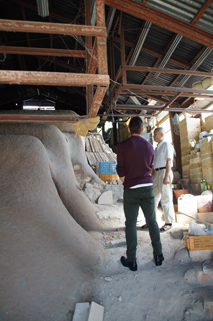
What is important for the pottery
Munakata told us that a piece must be beautiful to look at, and at the same time, the artist must also think about it being picked up, or used to drink or eat from it. Otherwise, it cannot be considered a good utensil. He told us what he discovered while teaching ceramics at a university. ”For example, when I instruct them to a tea cup by twisting the clay by hand, everyone tries to create something special. However, I tell them ‘to make something that you will be using`. Then it ends up being something quite different.” He told us that the custom of holding the bowl when eating is currently only practiced in Japan. It is certainly true that not only in Europe, but also in China and South Korea, people do not hold their dishes to eat. ”The Japanese custom which emphasizes the importance of tactile sensation, is highly rated from a neuroscience point of view.” Munakata told us.
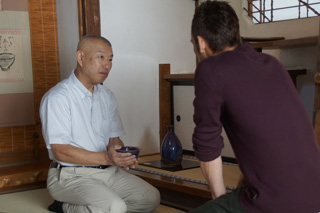
What you see once you use it
Nakata was able to experience bowl making using ”tebineri” or twisting by hand. The advice from Munakata was ”Imagine yourself drinking from it while you make it.” Following his advice, Nakata kneads the soil to create his work.
”I’m sure you absorbed a lot with your body that allowed you to evolve when you were playing soccer. If you drink tea from a well made tea cup that has a hidden essence of beauty, it will make you want to savour the tea and the hot water. All five senses will be stimulated, bringing the body alive.” The piece is completed as we carry on our conversation.
”This is nice. It has a good depth. You will be able to use this for serving matcha.” Munakata commented. ”Once you finish a piece, and someone uses it, they will gradually come to look at it differently.” Munakata said, smiling with his eyes.
